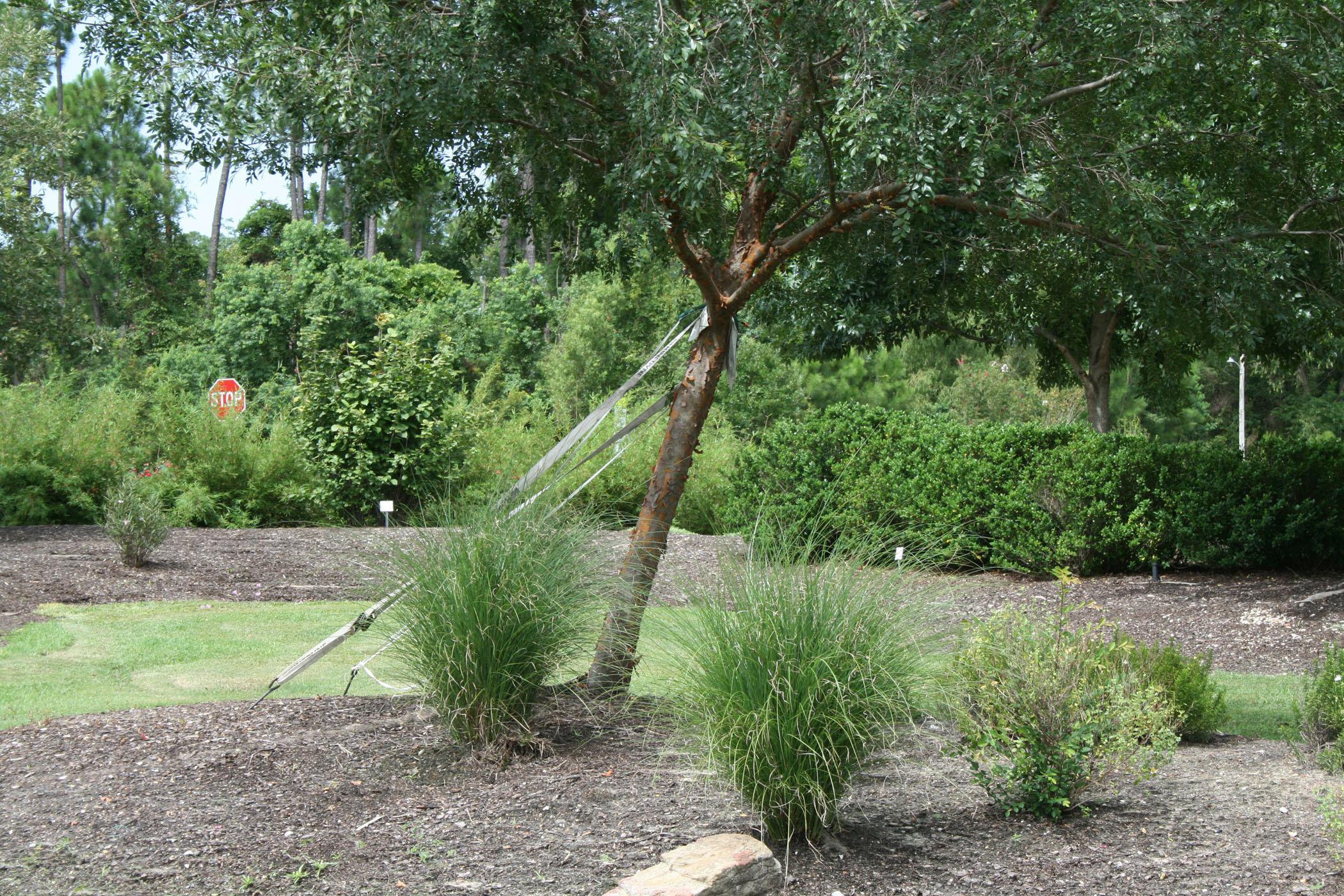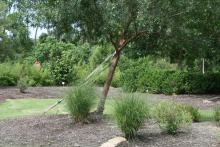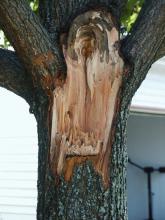Information Possibly Outdated
The information presented on this page was originally released on September 3, 2012. It may not be outdated, but please search our site for more current information. If you plan to quote or reference this information in a publication, please check with the Extension specialist or author before proceeding.
Repairs can salvage storm-damaged trees
Hurricane Isaac’s recent visit reminds us that weather can play havoc with our landscapes. While flooding is a problem in some areas, most of the damage tends to happen to trees in the landscape.
Trees can fall or be uprooted and can have broken and torn limbs, wounds, split branches and exposed roots. In many cases, damaged trees must be removed.
Limb damage affects the shape and general health of the tree. The tree must be pruned properly to avoid additional damage. Removing tree limbs is dangerous work. If you don’t know whether you can perform the proper repairs, hire a certified arborist for the job.
Cut off small broken or torn limbs 1 inch or less in diameter with a single cut at the branch collar to avoid unnecessary bark stripping. To remove large, heavy limbs greater than 1 inch in diameter, use the drop cut method, or 1-2-3 technique, to avoid ripping the bark and wood.
To start the drop cut method, make a cut on the underside of the limb, about 1 foot from the trunk or branch. Cut about one-third to one-half way through the limb. Make a second cut on the upper side of the limb, about 2 to 6 inches farther out on the limb than the first cut. Continue sawing until the branch splits off.
Remove the remaining stub by making a single cut at the branch collar. Never cut flush with the trunk or branch from which you are pruning. This will delay healing and may give rot organisms an entry into the tree.
Cut out broken, diseased and malformed branches to give the tree a desirable shape.
Storms often cause branches and trunks to split. Many times splits can be repaired using bolts and cables, somewhat like a doctor setting a broken bone. Repairing large branches and trunks can be very dangerous, so hire a certified arborist to do any such repairs.
The winds of a storm can damage the bark of trees, and often the damage looks worse than it actually is. Just as you should clean a wound on your finger, it is important to clean the wound on a tree.
Remove all loose bark and jagged or protruding wood with a saw or chisel. Smooth out any rough places where water could accumulate. As a general rule, wounds to a tree will heal themselves by growing callus tissue.
Do not paint or dress the wound edges or the exposed wood surfaces with products marketed as tree paint or wound dressing. There is little evidence that these products are actually beneficial, and they can, in fact, slow the healing process. Sealing a wound can trap moisture and harmful organisms inside and allow the wood to rot.
Your tree may not be broken or damaged but pushed over by the wind. Trees that are less than 4 inches in diameter can be straightened up and then staked or braced upright. You may have to keep the tree braced for up to two years to allow the roots to reestablish their hold. Remove any wires or bracing material that surrounds the trunk after the tree has become stable. If you don’t, they will girdle the trunk and inhibit future growth.
Prune a damaged tree just enough to balance any loss of roots, but avoid severe pruning.
Continue to care for your tree after repairs are completed. Check soil moisture and consider using mulch to conserve moisture as the dry fall months approach.
For more information on repairing storm-damaged trees, refer to Mississippi State University Extension Information Sheet 1355, Repairing Storm-damaged Shade, Ornamental, and Fruit Trees. This is available from your local county Extension office.












